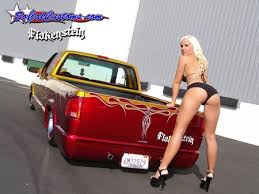
Greeting the Kia Soul with low expectations didn't make sense. Perhaps the details of the funkwagon's story seemed overly familiar at first blush – Kia wants, nay, needs to be more than just the bargain-basement Hyundai store. Differentiating product lines with the help of bold design has been tried before, and the results have been disastrous more often than they've been wildly successful. Finding out that the Soul's styling inspiration was a wild boar sent the cynical mind of this autowriter reeling, preparing to suffer with a bore of a swine-inspired car. But Kia's been on a roll lately with aggressively priced product that's well equipped and imbued with performance that's often more inspired than the sum of its parts. If any brand stands a chance of melding its design studio's hit parade with tuning that lives up to the looks, it's Kia.
The Boar thing – snicker if you like – but what Mike Torpey and the team of designers in Korea have wrought is earning accolades the world over. That porcine inspiration delivered a Red Dot design award for Kia, the first for any Korean car and a punctuation mark on the widely held opinion that the Soul is one fine-looking automobile. The critical success of the Soul's design is directly attributable to a nature documentary that designer Torpey took in while working on the car in Korea. The show was about a wild boar that is apparently common to the region, and something about the animal spoke to designer Torpey. The Soul's cheeky, brash stance is great looking in a non-conformist way, regardless of what got the idea going.

Boxy yet not slabby, the Soul's exterior has been deftly drawn with careful detailing. Windows and taillight clusters are set off by bevels, and a continuous line is an Easter Egg for anyone who cares to trace it from its origin outlining the glass, around the roof, down the back and across the bottom, finishing off in front. The raked and tapered sideglass furthers the Soul's ready-for-action stance. Every vent, character line, bulge and curve has been placed cleanly and with purpose, and the end result is that the Soul's styling is clever without being cloying. Drawing an automotive extrovert with just the right touch of restraint is no mean feat, and the longer you gaze at the Soul, the better it gets as you discover all the fun that the design team molded into its flanks.




No shrinking violet in any shade, the radioactive green on our test car was dubbed "Alien." The verdant hue is just the thing for springtime, and the Soul may represent a shift as big as the change of seasons in Kia's fortunes. Young buyers ought to be attracted to the Soul for its ability to tackle every request, as well as its low price and standard equipment list that includes plenty of desirable features that are optional elsewhere. Starting under $14,000, the base Soul has the bases well covered.
Down in the shadows, the mechanical details add up to a car with unexpected verve. Standard four wheel disc brakes impart a sure feeling to the brake pedal and stability control is also fitted across the board. Basic Souls are motivated by a 1.6-liter four-cylinder sending 122 hp and 115 lb-ft of torque through a five-speed manual transaxle, but those are expected to represent but a sliver of the model's total volume. Opting for an automatic transmission, ($950 extra in all trims), yields an immediate upgrade to the 2.0-liter four and its 142 hp and 137 ft-lb capabilities. Both engines employ dual overhead camshafts with variable valve timing, and the 2.0-liter we sampled delivered 29.9 miles per gallon with the four-speed autobox and zero babying. The automatic is mostly unobtrusive, though it occasionally it dodders a bit before delivering a kickdown. Throaty, the engine can get harsh sounding when twisting the tachometer needle hard, but keep your inner Rat Fink at bay and the Soul's braying fades into the background.


The Soul's steering is sporty where others in this price range can be numb. There's a life to the rack-and-pinion setup that says the Soul has been tuned by folks who know what a proper front-wheel drive car should feel like. Despite any "box it came in" commentary from onlookers, the Soul is more than a mere wheeled appliance. A taut, nearly athletic feel has been part of Kia's brief across its entire vehicle range for at least a couple years and that philosophy benefits the Soul, too. A strut front end and torsion beam rear axle are certainly not revolutionary, and in the wrong hands such a suspension setup can feel woefully dated. Instead, the Soul feels great from behind the wheel. A front anti-roll bar and gas-charged dampers all around add up to a lively, well behaved experience. Simply put, the Soul is fun to drive with its standard setup, and the Sport trim level carries a retuned suspension and larger 18-inch alloy wheels, so it promises to be more entertaining still.

"Fun" will be on your lips often when discussing the Kia Soul, especially when talk turns to the interior. Just as much attention has been paid to making the experience inside the Soul live up to the exterior styling. There are four trim levels – Soul, Soul +, Soul !, and Soul Sport – mostly differentiated by what Kia fills each model with. The standard Soul has plain black upholstery, yet it doesn't skimp on equipment. The standard audio system has auxiliary and USB jacks and there are two steps of entertainment upgrades, with the top-level system kicking out 315 watts. There are even red lights in the speakers housings that can pulse soothingly or twiddle in time with the music. A gimmick, sure, but gewgaws are allowed when the basics are good. Despite the affordable pricing, the Soul's interior is not cheap. The stalks and HVAC controls feel as good as some we've sampled in near-luxury cars. Air conditioning and power windows and locks are standard, and optional Bluetooth capability is a welcome nicety.




Despite trim dimensions, there's a blessing of storage and passenger space inside the Soul. Tidy of dimension, the area behind the second row seats is useful but not huge, although dropping the 60/40 rear seats opens it right up. Rear leg- and foot-room is surprisingly generous inside the Soul, too. In the dash, there's a storage compartment at front and center, as well as a dual-level glovebox that seemingly extends all the way to the firewall. Opening either cubbie for the first time garnered a grin as we found Kia had chosen bright red as the color for inside. Doors have storage compartments and bottle holders, and more storage was found in the armrest of our car, which easily concealed a digital SLR camera. Both the steering wheel and front seats are adjustable for height, but only the chairs slide fore-and-aft – a telescoping column would've been a nice touch.




Stepping up the trim-level ladder adds more whimsy to the interior in the form of fabrics and colors. Soul + models get inserts on the seats with a repeating Soul logo, while Soul ! buyers will find houndstooth check on the seats and an interior scheme that puts sand-colored accents on the dashboard and door panels. Soul Sports ratchet the interior up to its max, with metal-look accents and pedals, and a red and black interior theme that extends to the sport seats. Door panels not graced with contrasting colors might betray a feeling of creeping cheapness, but the Soul's interior punches above its weight for sure.
Corporate sibling Hyundai seems to have cribbed the Soul's recipe of a vehicle full of equipment, fun and safety gear for the Elantra Touring, but the Soul's styling puts the Kia on top. Among rival brands, this car is going to lose a flat-out performance challenge to the Honda Fit, but it is supremely well equipped, comes with a faintly ridiculous 10 year/100,000 mile warranty – and tops out below $20,000. Standard front, side and curtain airbags along with stability control covers the safety gear comprehensively, and there's no denying the handy nature of a hatchback.

Young buyers these days seem to care less about cut-rate performance cars and just want a vehicle that will fit their lifestyle of doing stuff while being entertaining to drive and look at. The Kia Soul seems like a shoe-in under those criteria. Its styling is all but universally praised, its price of entry is eminently reasonable, and its driving demeanor exceeds expectations. All-in, we look for the Soul to be Kia's breakout hit that wins comparo crowns, sips fuel, hauls stuff and has a great time doing it all. While we may have approached the Soul steeled for disappointment, we walk away impressed and now think of Kia's backpack-wearing wild boar as one of the segment's standard-bearers.
[Source: Autoblog]



































